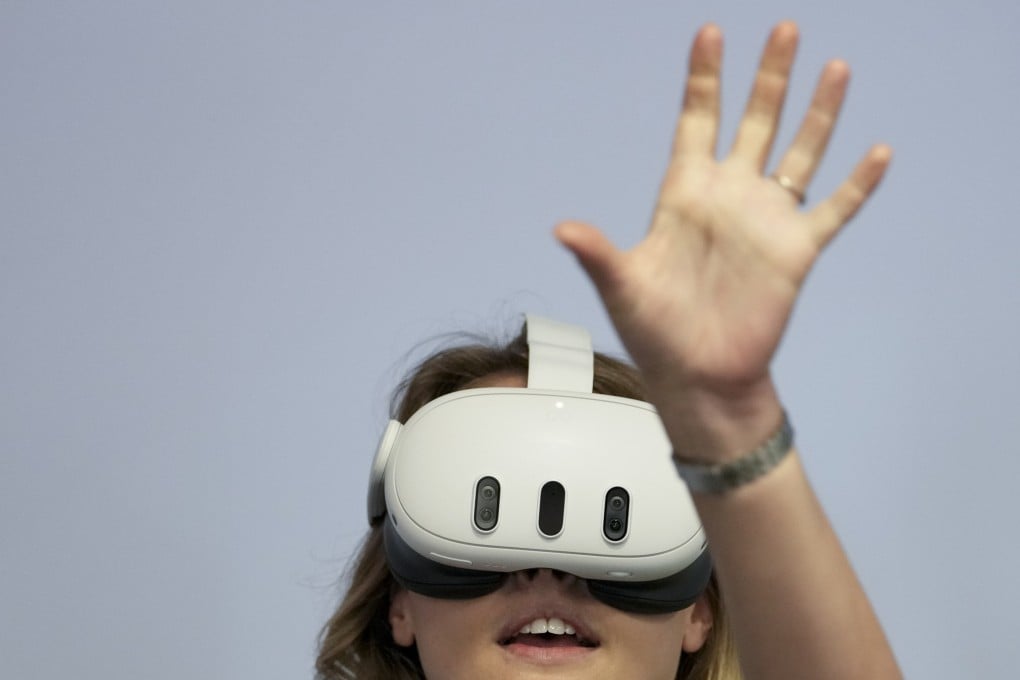Advertisement
Meta launches Quest 3 VR and AR headset, just ahead of Apple’s Vision Pro
- Meta Platforms has rolled out its Quest 3 headset and the second-generation smart glasses it developed with Ray-Ban
- Apple is poised to release its Vision Pro mixed-reality headset in the coming months, setting up a showdown with Meta
Reading Time:3 minutes
Why you can trust SCMP

Meta Platforms introduced its latest line-up of head-worn devices, staking fresh claim to the virtual- and augmented-reality industry just ahead of Apple pushing into the market.
The company officially unveiled the Quest 3 headset on Wednesday, raising the price by US$200 to US$500, at its annual Connect developers conference. It also introduced second-generation smart glasses that it developed with luxury sunglass maker Ray-Ban.
The Quest 3, which was previewed by Meta earlier this year after Bloomberg published a hands-on review of the device, offers improved performance over the Quest 2 from 2020. It also marks a pivot from VR to mixed reality, which melds virtual and augmented reality.
Advertisement
It is a high-stakes moment for Meta’s hardware business. Though the company has dominated VR goggles for years, Apple is poised to release its Vision Pro headset in the coming months, setting up a showdown. Like the Quest 3, the Vision Pro is a mixed-reality headset – though one with exclusive Apple technology and content. The Vision Pro will have Apple’s marketing muscle behind it, but also a much higher price: US$3,499.

In addition to the competitive pressure, Meta also has struggled to sell consumers on the metaverse – a collection of interlocking online worlds that make use of its headsets.
Advertisement
Advertisement
Select Voice
Choose your listening speed
Get through articles 2x faster
1.25x
250 WPM
Slow
Average
Fast
1.25x